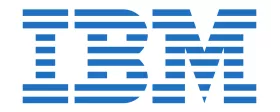4 takeaways from the 2nd automotive chiplet conference
On October 10 and 11, 2023, the automotive ecosystem convened at imec to talk about what’s now routinely called ‘the chiplet challenge.’ Here are four takeaways from those two days.
1. Chiplets are on everyone’s radar
The number of participating companies had risen from 30 to 50 compared to the first installment of the automotive chiplet conference. It’s safe to say all these people didn’t fly in to enjoy the Belgian autumn weather. They were there because chiplets are a hot topic in the industry.
One participant said, “The question is not if but when chiplets will enter the automotive market.”
It’s a matter of logic: next-level ADAS and in-vehicle infotainment (IVI) features will require compute performance levels that are on par with those of data centers or high-end consumer devices. And these markets have already moved to chiplets.
Everyone agreed that chiplets will be a part of future cars, no matter what. That means the industry now has a window of opportunity to steer this inevitable evolution jointly.
Because if standards can be established, OEMs can mix and match chiplets from different, sometimes niche, semiconductor players. That will fuel innovation and make the supply chain more diverse and resilient.
To read the full article, click here
Related Chiplet
- Interconnect Chiplet
- 12nm EURYTION RFK1 - UCIe SP based Ka-Ku Band Chiplet Transceiver
- Bridglets
- Automotive AI Accelerator
- Direct Chiplet Interface
Related Blogs
- Three Key Takeaways from the First Annual Chiplet Summit
- Jumpstarting the Automotive Chiplet Ecosystem
- UCIe and Automotive Electronics: Pioneering the Chiplet Revolution
- Chiplet Integration in the Automotive Realm
Latest Blogs
- Bosch and the chiplet revolution: Enabling software-defined mobility
- Addressing the Biggest Bottleneck in the AI Semiconductor Ecosystem
- Thermal Management in 3D-IC: Modeling Hotspots, Materials, & Cooling Strategies
- 3D Chips: Socionext Achieves Two Successful Tape-Outs in Just Seven Months
- Intel Foundry Collaborates with Partners to Drive an Open Chiplet Marketplace
